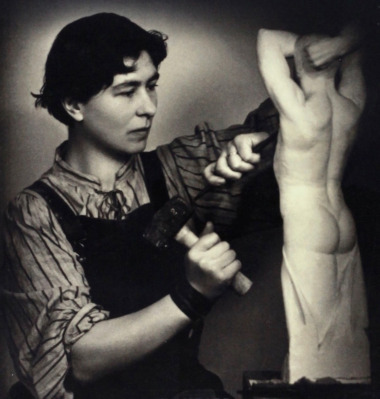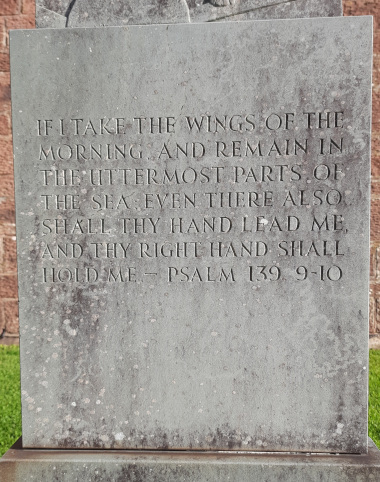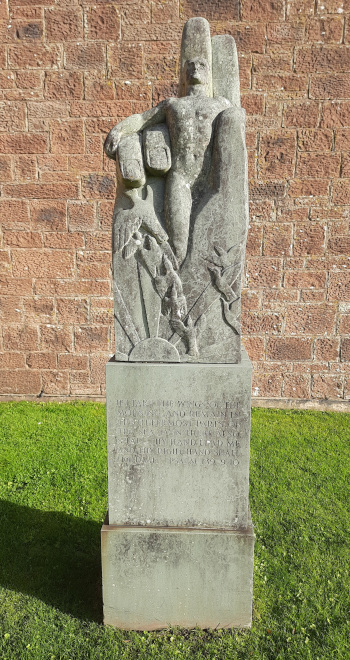|
 |
The Old St Beghian | |
| January 2025 | |||
George Robson (FN 57-64) has also been investigating a relatively unknown monument:
THE HAND.“In 1956 my parents and I arrived in St Bees to meet Headmaster James Wykes and for him to show us the school’s principal buildings and learn what it was to be a pupil of the school.
Of course, the then new Memorial Hall was one of the buildings we looked around. On leaving it to cross over to the library I noticed a slate-coloured feature standing just outside the Hall. The Headmaster didn't mention the feature as we swept past it.
Not even once during my six years as a pupil of the school do I recollect any reference being made to what I now know is called THE HAND. This is rather strange as I reckon the Bible quotation on the plinth would be an obvious starting point for a sermon.
The Hall was built in 1954 as a tribute to those St Beghians who fell in World War Two, and the following year The HAND was placed on an inscribed pedestal just outside the entrance.
Sixty-seven years have passed since this first visit to St Bees and I have been driven to find the story that lies behind
THE HAND.
JOSEFINA ALYS HERMES DE VASCONCELLOS is an exotic mouthful of a name. She is described on Google as a ‘notable sculptress who worked in bronze, stone, wood, lead and perspex’. For much of her working life she lived in Little Langdale in Cumbria, i.e. not a million miles from St Bees.
Born in Surrey as the daughter of a Brazilian diplomat, she built up a distinguished reputation through achievements at the Academy de la Grande Chaumiere in Paris and the Royal Academy. Her first exhibition was at the Royal Academy’s summer show in 1929 and her first major commission in the same year was for the church of St. Valery at Varengeville-sur-Mer in Normandy. Here she produced a reclining life-sized figure of St. Valery, which was placed under a stone altar.
Although maintaining a studio in London she bought a house at Little Langdale in the Lake District. Her husband Delmar Banner was an Anglican lay preacher and together they adopted two children in 1940. Banner led his wife to be received into the Church of England and henceforth the topic of faith came to run through Josefina’s artistic life. This was seen in her creating THE HAND (known in some quarters as THE HAND OF GOD), which she carved in memory of a friend killed during the war and placed outside the newly built Memorial Hall at St Bees. She initiated the founding of the Harriet Trust at Millom so that disabled children could enjoy nature holidays within a purpose-built dwelling. She then modified a fishing trawler called THE HARIETT to be used by the children as a recreation space. For this charitable work de Vasconcellos was awarded an OBE.
At the age of 84 de Vasconcellos was forced to leave her large Little Langdale home but found a small cottage and studio in Ambleside. Here she created her final work known as ESCAPE TO LIGHT which commemorates the men of the independent off-shore rescue service. She had been a close friend of Beatrix Potter and at the age of 99 published a large collection of letters of friendship between the two titled SHE WAS LOVED: MEMORIES OF BEATRIX POTTER.Her final months were spent at The Orchard Lodge nursing home in Blackpool where she passed away at the grand age of 100 in July 2005.
Maybe we should find the time to dwell on the words of the monument’s inscription:
IF I TOOK THE WINGS OF THE MORNING
AND REMAIN IN THE UTTERMOST PARTS
OF THE SEA EVEN THERE ALSO SHALL
THY HAND LEAD ME AND THY RIGHT
HAND SHALL HOLD ME
Psalm 139 verses 9-10.”
Home
The St Beghian Society
St Bees School,
St Bees, Cumbria, CA27 0DS.
Tel: (01946) 828093 Email: osb@stbeesschool.co.uk
Web: www.st-beghian-society.co.uk
![]()
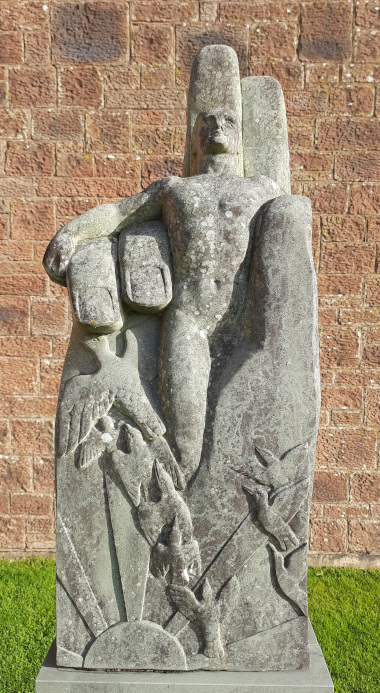
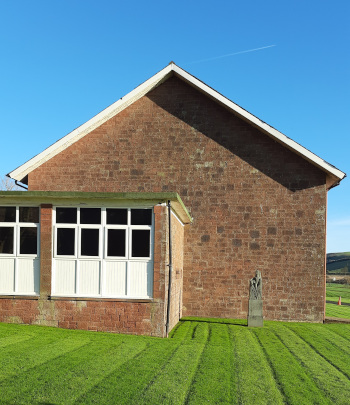
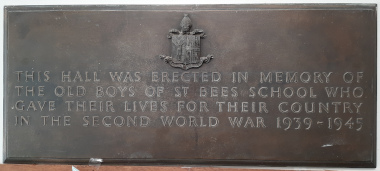
.jpg)
